No Results Found
The page you requested could not be found. Try refining your search, or use the navigation above to locate the post.
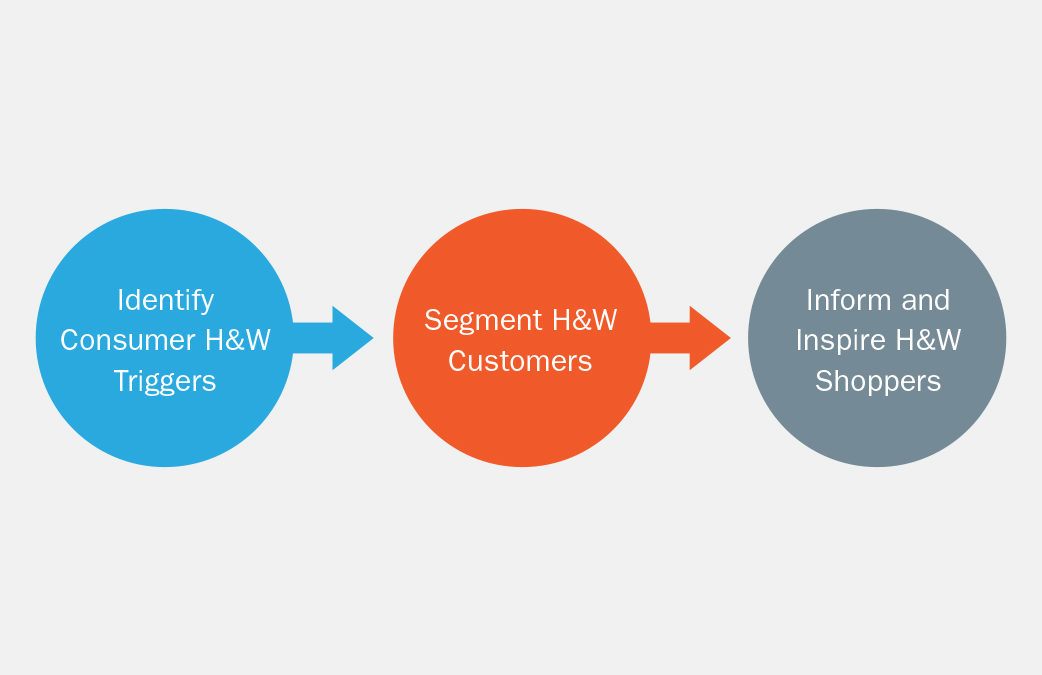
Food & Beverage are the primary tools for the majority of Americans to manage their overall Health and Wellness (‘H&W’). 1 in 4 Americans report using exercise to primarily manage their health and wellness, while 3 in 4 Americans do so through food.1
Unfortunately, US consumers are becoming less healthy overall. For example, 9.4% of the US population is diabetic, and another 25% is prediabetic; obesity levels continue to rise.2 Healthier eating and nutrition are widely discussed in culture, yet 2 in 3 consumers are confused about which products to choose as healthy.1
Helping consumers make better nutrition choices is clearly better for public health. It is also a critical growth strategy for brands and retailers as 2 in 3 shoppers are willing to pay a premium for healthier products.3
State of Health & Wellness1

We believe every manufacturer can unlock growth through H&W, but it requires greater focus on truly understanding consumer H&W triggers, identifying the consumer role of H&W at retail, and engaging consumers along the purchase journey.
In this growth paper, we highlight how manufacturers can simplify H&W choices, engage shoppers along the purchase journey, and partner with retailers to grow category and brand sales.
H&W Playbook


A one-size-fits-all approach won’t work as consumers have unique needs when it comes to H&W. Two segments of H&W consumers, Limiters and Seekers, are examples of how this is uniquely brought to life:
1) Limiters restrict how much unhealthy food they eat and seek physical benefits from their diet. They look for specific macronutrients and take a measured approach to support managing their body.
2) Seekers are eating natural and unprocessed foods regularly and are searching for help with holistic health and functional performance. They actively use food and beverages to enhance their physical and mental wellbeing.
Manufacturers and retailers need to understand consumer H&W motivations by segmenting and targeting consumers based on attributes and benefits they prioritize, as well as motivations and triggers that drive changes in behavior. Providing products and communication that resonates with the unique priorities of each specific segment is the foundation for growth.
Consumer Triggers


Manufacturers must understand the H&W development of their customer set to inform how they engage with retailers. Many retailers are looking to connect to growing H&W trends, but need help to do so in a way that is right for their shoppers.
Manufacturers should build a H&W retailer segmentation to inform how to position their portfolios and advise retail partners on how to grow through H&W. This starts with both
1) Identifying how important each H&W offer is for a retailer’s shoppers
2) Identifying how shoppers rate retailer performance on this offer
Understanding the intersection of importance vs. performance helps manufacturers prioritize investment and customize recommendations for retailers based on a shopper-first perspective.
![]() We need MFGs to tell us what is right way for me to be a H&W leader for our shoppers.”–Leading US Retailer
We need MFGs to tell us what is right way for me to be a H&W leader for our shoppers.”–Leading US Retailer

To truly unlock growth, manufacturers need a deep understanding of the role H&W plays in driving behavior along the shopper journey. Given the high degree of confusion among shoppers around which H&W products are best, brands have the opportunity to educate consumers and influence their choices.
Manufacturers also need to work with retailers to support shopper activations and evolve in-store conditions in a way that provides much needed H&W information for shoppers and drives category growth.
Through this process, manufacturers can better leverage H&W insights to inform the right distribution of items, optimize the shelf set, determine which benefits & attributes to communicate through merchandising and optimize pricing opportunities.
![]() Shoppers are overwhelmed by the choices in the grocery store and the lack of transparency on what is actually healthy. It’s hard to know what’s good for you these days as diet trends keep changing and the ‘healthy’ options in the stores keep expanding.”4
Shoppers are overwhelmed by the choices in the grocery store and the lack of transparency on what is actually healthy. It’s hard to know what’s good for you these days as diet trends keep changing and the ‘healthy’ options in the stores keep expanding.”4
![]() It’s just product overload. There are tons of stuff in every single category. Everything is organic or inorganic or said to be ‘healthy.’ It’s hard to weed out what you should and shouldn’t buy.”4
It’s just product overload. There are tons of stuff in every single category. Everything is organic or inorganic or said to be ‘healthy.’ It’s hard to weed out what you should and shouldn’t buy.”4
To drive growth through health and wellness, manufacturers and retailers need to start with the consumer, identify their H&W needs, understand what they aren’t getting today, and let this drive decisions along the shopper journey. Those with deep H&W insight will better delight consumers, shoppers and retailers, and unlock a significant new source of growth.
The Seurat Group is an insights-driven consumer packaged goods consulting and private equity firm whose mission is to delight consumers. We help our clients and portfolio companies by artfully integrating multiple lenses of insight to unlock new perspectives & uncover new growth opportunities.
We’d love to hear from you! To discuss any of these ideas further, please contact us at info@seuratgroup.com or visit us at https://seuratgroup.com/

2 CDC.gov
3 Seurat Benchmarking 2018
4 Food Navigator and Bernstein
The page you requested could not be found. Try refining your search, or use the navigation above to locate the post.
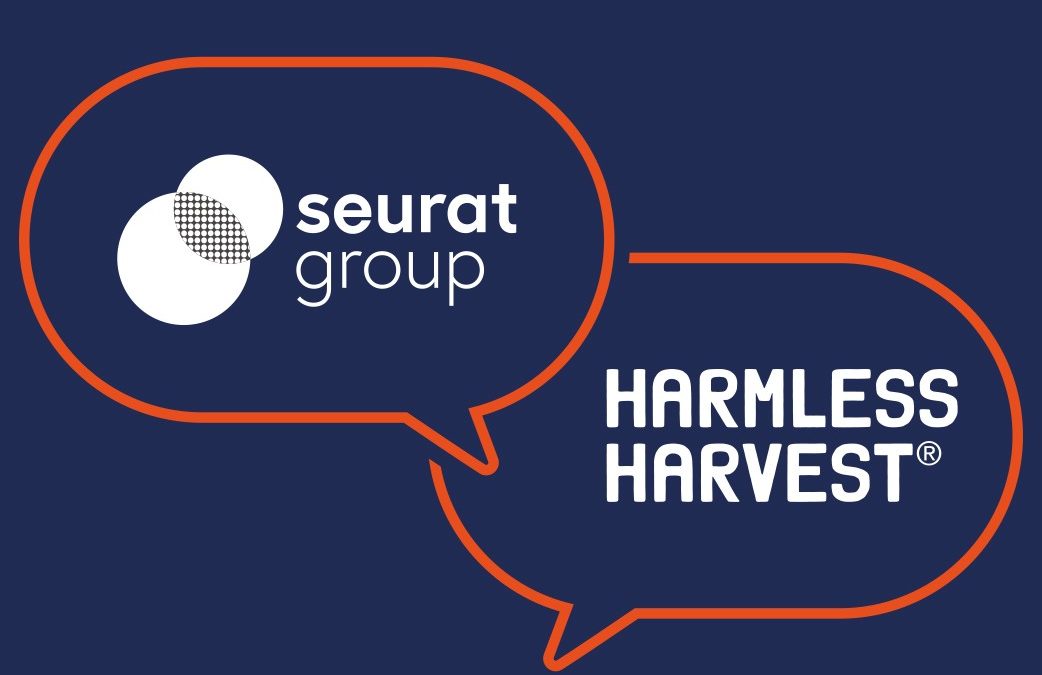
The Seurat Group has well-documented the rise of the challenger brand within the CPG industry. We admire their ability to disrupt categories and create new segments by better meeting consumer needs. In this series, we have set out to profile successful challenger brand leaders and better understand how they challenge convention.
In each article, we focus on 3 questions:
 Harmless Harvest unlocked a whole new tier of premium coconut water when it launched the first non-thermally pasteurized, perishable coconut water in the US. The brand stood out due to its elegant packaging and the distinct pink hue it takes on when antioxidants in the water interact with elements, such as light. In 2014, it became the first brand to achieve Fair for Life Certification. This designation means that Harmless Harvest is committed to paying fair prices for goods like their coconut water and supporting the wellbeing of local communities in Thailand, where they source and manufacture products. Not only is Harmless Harvest organic but they also help farmers convert to organic methods.
Harmless Harvest unlocked a whole new tier of premium coconut water when it launched the first non-thermally pasteurized, perishable coconut water in the US. The brand stood out due to its elegant packaging and the distinct pink hue it takes on when antioxidants in the water interact with elements, such as light. In 2014, it became the first brand to achieve Fair for Life Certification. This designation means that Harmless Harvest is committed to paying fair prices for goods like their coconut water and supporting the wellbeing of local communities in Thailand, where they source and manufacture products. Not only is Harmless Harvest organic but they also help farmers convert to organic methods.
In 2018, the company needed to transition to a new phase of growth strategy without losing its challenger identity and mission orientation.
For Ben Mand, the decision to join the Harmless Harvest team came down to three questions:
(1) Did he believe in the brand?
He did: he felt the mission was one he could truly put his heart and soul into.
(2) Did he believe in the product?
He did: after conducting taste tests, chatting with store employees, and scouring online reviews, Mand felt that Harmless’ product was truly unparalleled.
3) Did he have the skill set to help the brand harness its full potential?
He did: Mand had built a career in the consumer goods industry, making a name for himself as a tackler of thorny problems at General Mills, and playing an instrumental role in the meteoric rise of Plum Organics (where he held many roles, including SVP of brand marketing and innovation). He believed his expertise in revenue generation, culture development and supply chain/logistics management would help take Harmless Harvest to the next level.
We were excited to talk to Mand about Harmless Harvest’s ambitious mission to challenge the very fundamentals of capitalism.

Mand: This company was founded first and foremost on the principle of constructive capitalism. In traditional capitalism, the founders or investors might benefit from a company’s growth. In a constructive model, everybody along the value chain should benefit – farmers, harvesters, employees, consumers, investors – everyone.
Our founders (Justin Guilbert and Douglas Riboud) started the company with this business model in mind, but no idea what they were actually going to make. Justin and Douglas found themselves in South America, sampling different types of fruits they could commercialize as juice and bring to market. To help balance the taste, they tried blending them with coconut water, but they found all the coconut waters were nasty! They realized that despite coconut water becoming increasingly popular, no one was doing it right. The other manufacturers were all using the same factories and the same sub-optimal processes that included concentrating or thermally processing the water. This resulted in a product that was so far from what coconut water should be. Justin and Douglas knew they could do it better.
Today, we are challenging the way that business should be done and the way that consumers think about paying for products. Consumers in the US spend a smaller share of their income on food compared to any other country in the world (note: American consumers spend 6.2% of their household income on food).1 However, what we eat is so foundational to long term personal, environmental and societal health.
![]() I believe it’s my job to help more people understand that it’s worth it to spend a little more on what they eat and drink in order to better support product quality and responsible business.
I believe it’s my job to help more people understand that it’s worth it to spend a little more on what they eat and drink in order to better support product quality and responsible business.
Harmless Harvest coconut water is quite a bit more expensive than shelf stable, but we are more than worth it in terms of taste, purity, and impact.

For consumers, we have to prove to them that the high price is worth it. Our credentials (like Organic and Fair for Life) get us in the door – they show we are “one of the good guys”. But, it’s really about the quality of our products. When consumers try our coconut water, they immediately get that it’s dramatically different. To get people to try it, it’s not about mission-driven, it’s about celebrating taste. After they experience our product, we can share more about our story. You have to earn the chance to educate them by first providing a demonstrably better taste experience. For retailers, we need them to understand that this is a different type of business. I took a number of my leadership team members, including my head of sales, to Thailand to observe our supply chain and factories. You could argue that a head of sales doesn’t need to know how we pick our coconuts. But I felt it was important that he know how to translate what we do for our customers.
![]() Academically, anyone can talk about responsible business, but when you go there and experience it, it becomes personal and visceral. He can use that experience in conversations with customers to help them understand how our products are different and more aligned with the needs of the new millennial consumer.
Academically, anyone can talk about responsible business, but when you go there and experience it, it becomes personal and visceral. He can use that experience in conversations with customers to help them understand how our products are different and more aligned with the needs of the new millennial consumer.

One of the key challenges is to really focus not only on getting your leadership team right, but also setting your entire organization up for success. You have to understand the organization, assess the current capabilities and make sure you have the right plan in place. If not, you’re hampered in your ability to build and deliver against a bold plan. Do you have the right people, capabilities and metrics in place to support your priorities? I joined the company in July, and we delivered our strategic plan to the board in November. This gave us essentially 5 months to re-work the leadership team, assess the business and organization, determine the organizational priorities, and write the plan – all while building out the teams across the organization. It was a sprint, but it let us hit the ground running on our biggest priorities.
As we look ahead, I am most excited for this team to tackle our biggest supply chain priorities and launch our new phase of innovation. Those two areas are true unlocks from a topline and profitability standpoint.
The Seurat Group is an insights-driven consumer packaged goods consulting and private equity firm whose mission is to create the clarity to act and invest in the future. We help our clients and portfolio companies sell more, more profitably, in more places, to more people by challenging convention.

1 https://www.weforum.org/agenda/2016/12/this-map-shows-how-much-each-country-spends-on-food/.
The page you requested could not be found. Try refining your search, or use the navigation above to locate the post.
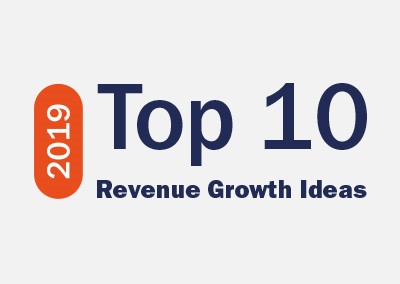
As has become tradition, we are sharing our annual top 10 revenue growth ideas with our network. This year we are using our platform to focus specifically on the role that Insights can play in unlocking growth.
We believe that the Insights function has the mandate to play a more transformative role in a company’s growth strategy. Insights should be a growth function, acting as an inspiration generator and conviction creator that empowers teams to make bold decisions.
With that in mind, we are highlighting the top 10 ways to leverage Insights for revenue growth. These concepts span all levels of the growth strategy framework, further reinforcing how Insights should be involved in every step of creating and updating a firm’s demand-generation strategy.


Map for tomorrow
Develop a proprietary, predictive view of where to play that defines the consumer frame of reference, addressable market, and best opportunities to commercialize strategic choices.
Why it Matters:
A common insights foundation guides innovation and brand strategy, allowing brands to stay ahead of tomorrow’s opportunities and anticipate where to play in the future.
Role of Insights:
Result:
This forward-looking market map empowers the team to plan ahead and creates the right to win.

Assess your job prospects
Expand thoughtfully by regularly assessing and re-assessing which jobs your brand can win.
Why it Matters:
Breakthrough revenue growth comes when brands successfully expand their reach into new spaces.
Role of Insights:
Result:
An effective insights foundation identifies the brand’s repeatable growth model and enables smart and sustainable expansion.

Create conviction
Know where to play – and just as importantly, where not to play.
Why it Matters:
As organizations grapple with big choices on how to prioritize multiple opportunities, they need the clarity to make difficult decisions, especially when that means challenging convention.
Role of Insights:
Result:
Insights-driven decisions that build widespread support for broader organizational direction.

Champion your leading edge
Inspire disruptive innovation by learning from the leading-edge consumer—that is, consumers other than your category’s mainstream core consumer.
Why it Matters:
Research based on today’s core results in close-in line extensions and product modifications, not forward-looking innovation that creates the right to win.
Role of Insights:
Result:
Understanding the leading edge allows the team to disrupt by better meeting unmet or emerging needs.

Embrace omnichannel
Think outside the traditional channel structure when researching or planning go-to-market efforts.
Why it Matters:
The siloed “channel-first” approach fails to account for the increasingly cross-channel nature of shopper journeys. As methods to engage consumers and shoppers become more fragmented, it is critical to understand shopper journeys and key trigger points from an omnichannel perspective.
Role of Insights:
Result:
Insights functions can enable organizations to make go-to-market decisions and integrated demand plans through the lens of the consumer.

Spark digital transformation
Reimagine your organization’s approach to digital by placing the consumer and shopper at the center of your strategy.
Why it Matters:
Your shopper’s path to purchase increasingly involves fragmented digital touchpoints, and she expects a seamless brand experience across these points – on her terms.
Role of Insights:
Result:
Organizations can transform to align with this new consumer reality, justifying their investment with a solid fact base.

Activate the 4Es
Elevate the value equation from the traditional 4Ps to the new 4Es: Experience, Exchange, Evangelism, and Everywhere.*
Why it Matters:
Today’s consumer has more choices than ever, requiring brands to work harder to win trial and build loyalty. Consumers want to engage with brands on their own terms before “rewarding” them with a purchase.
Role of Insights:
*In the digital age, a successful brand must engage consumers through the 4Es. The Product becomes an Experience that delivers memorable moments. Price evolves to an Exchange that goes deeper than a transactional relationship with the consumer, offering value beyond price. Promotion turns into authentic, consumer-led Evangelism. And Placement becomes Everywhere: a consistent product and brand story available everywhere your consumer expects to see it.1
Result:
Mindset shift equips brands to authentically deliver against new growth levers and strengthen consumer loyalty.

Prioritize packaging
Reimagine packaging to enable the 4Es and elevate the brand value equation.
Why it Matters:
Packaging is often under-utilized for growth but plays a vital role in unlocking new consumer engagement and distribution opportunities.
Role of Insights:
Result:
Full leverage of a critical growth lever.

Leverage e-commerce learning for rapid iteration
Use digital as a learning channel in addition to a sales and marketing channel.
Why it Matters:
The rapid acceleration and “failing fast” needed to win in eCommerce can fuel success in other channels, too; this is a critical part of the challenger brand playbook.
Role of Insights:
Result:
Better-informed omnichannel planning and successful retail launches.

Unlock the value equation
Drive revenue growth by better elevating the consumer value equation and proactively addressing ecommerce-driven pricing challenges. If not already existent, establish a Strategic Revenue Management leadership function to guide decision-making.
Why it Matters:
Among global top-50 CPGs, two-thirds of revenue growth is driven by pricing and mix, not by volume gains. ecommerce-driven price transparency makes revenue and profit growth even more challenging.2
Role of Insights:
Result:
Brands can thrive across retail environments even as price transparency issues increase.
We’d love to hear from you! To discuss any of these ideas further, please contact us at info@seuratgroup.com

1 Brian Fetherstonhaugh, Ogilvy & Mather.
2 BCG: How Net Revenue Management Boosts the Top and Bottom Line.
The page you requested could not be found. Try refining your search, or use the navigation above to locate the post.
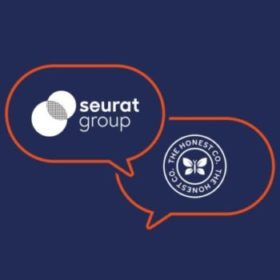
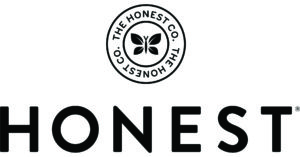
We focus on 3 main questions:
Nick Vlahos, formerly COO of The Clorox Company, joined The Honest Company as CEO in 2017 and was responsible for many of the shifts in strategy that are driving The Honest Company’s resurgence, including a focus on core product categories and improved R&D practices. After spending time at other values-based organizations (including building the Burt’s Bees brand at Clorox), Vlahos was personally intrigued by The Honest Company’s mission to empower people to live happy, healthy lives. We sat down with him to learn about how he has helped the brand further its purpose while evolving its Challenger mindset over the last 18 months at its helm.
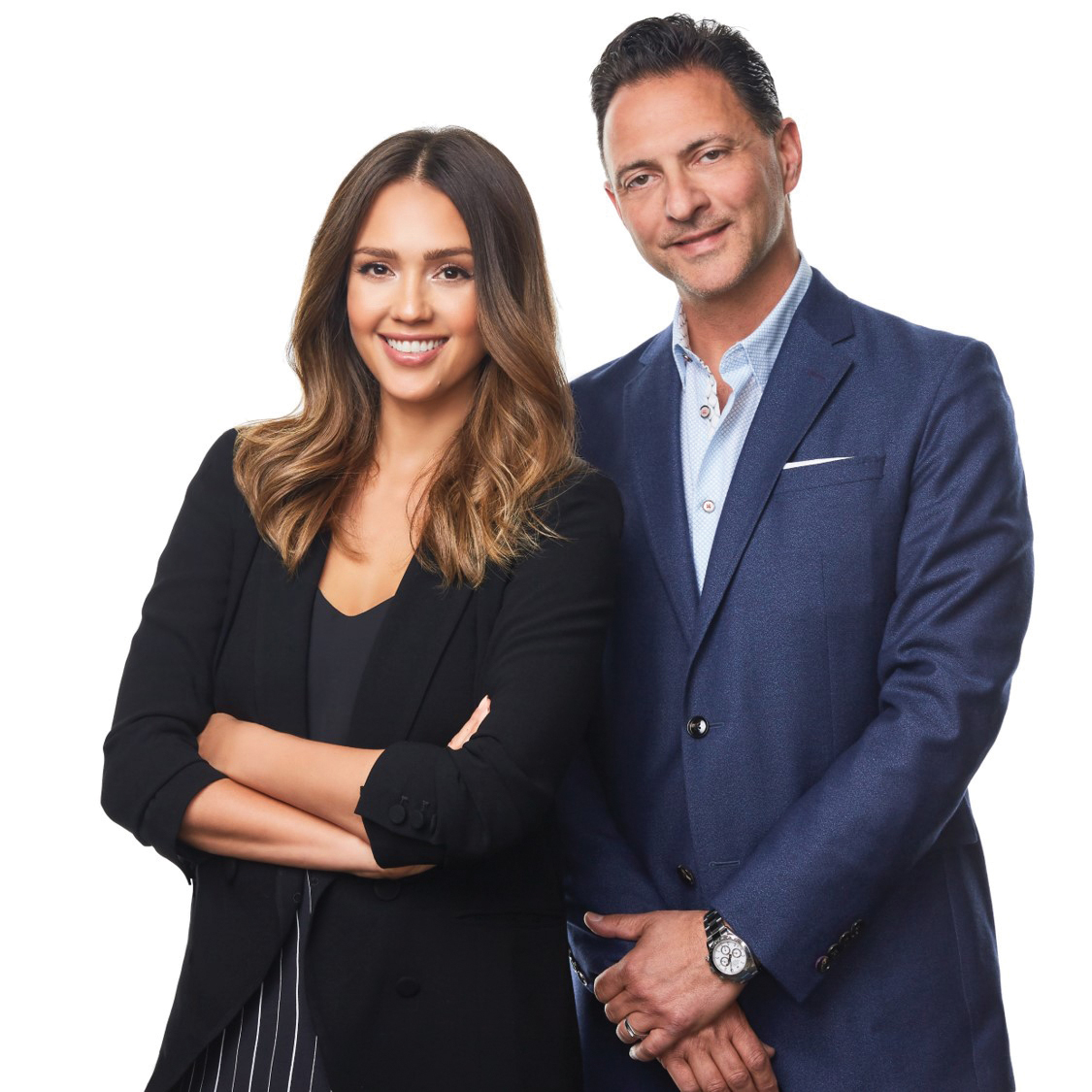

Vlahos: From the beginning, it was all about empowering people to live happy, healthy lives. And that mission resonates in an even bigger way today. The beauty of this mission is that it isn’t in a specific category, rather, it’s bringing the idea of “wellness” to life in the things that go on you, in you and around you. With my experience building brands domestically and internationally, I play a crucial role in helping to further our brand mission. We are fortunate to have so much room for growth given that the company is only 7 years old.
At its inception, the company was disruptive in that it was e-commerce first, thanks to our direct to consumer model. Traditional companies had built supply chains and retail distribution with brick and mortar retailers that were dependent on shoppers taking a car ride or a walk and navigating the store to access their products. Jessica’s vision around empowerment was not only around transparency and wellness, but also ease. How do we do things better to really help you live a happy, healthy life? Maybe you are happier without having to take a trip to the store to get the solutions you need. We disrupted an industry that was built around retail distribution and made it easier for consumers to get products delivered to their homes.
At that time, we were challenging the convention that you have to go to the store to buy household essentials. We took this convention and said no, not necessarily. We will provide those items directly to you and create a subscription model where you don’t have to think about it anymore. That model seriously disrupted traditional go-to-market norms.
Can anyone execute with excellence in DTC, dot coms, and brick and mortar? And do that in a way that remains authentic to the company’s mission? And can you do that consistently? And can you do that in international markets?
We believe we can. Today, we provide products wherever people want to procure them. If you’re interested in online, we are there. If you are interested in going to a store and walking, you can find us at major retailers. That’s how people want to shop today, so we need to be in a position to really disrupt there. The big players are of course trying to do this too, but we believe we can do it better by offering the right value proposition at each access point. Many of the big players started as retail businesses and now are becoming DTC. We started as DTC – with that comes the best data and authentic consumer connection. We are using these assets to our advantage as we expand into brick and mortar.
Our direct to consumer DNA gives us an edge with innovation. For example, we did a Major League Baseball diaper collection. We created unique diapers for 8 teams/cities. We introduced it through our DTC platform, and in just 60 days were able to learn which products sold, and which didn’t, and why. In 2 cities, the product just didn’t sell as fast. That enabled us to better manage our own supply chain. It also helped us with our retail partners by not putting those cities’ product on the shelf because the turns weren’t there.

As we continue to grow, our competition takes notice and looks to us for inspiration. There are more competitors trying to get into the natural, better for you space, so our categories get more crowded. The positive is that they raise consumer awareness – and we want people to know about better products and ingredients so that we can change the CPG industry together for the better.
As we scale, we need to maintain the performance, quality and efficacy of our products. We wanted to raise the bar in order to compete with the larger players that have robust capabilities around formulation and development. We needed to rise to meet those standards by providing products with really strong designs and by maintaining the highest levels of safety and efficacy. Finally, we needed to bring our products to market faster. To do so, we built product labs for both our beauty and personal care businesses. Now, we do product development in-house, then work with the right partners when it comes to manufacturing the product. This sets us apart and allows us to stay nimble.
As we scale, we are looking to improve the quality of our products. At the end of the day, our customers’ health, safety and satisfaction is our highest priority, so we need to continue to provide the highest quality products on the market. Every day we are continuing to work on earning our consumer’s trust. It’s hard to gain and easy to lose. Our mission is more resonant than ever when it comes to transparency and raising the bar on safety. We want to scale our business and maintain trust by ensuring that there is never a trade-off when it comes to the efficacy, quality, safety and goodness of our products.
The page you requested could not be found. Try refining your search, or use the navigation above to locate the post.
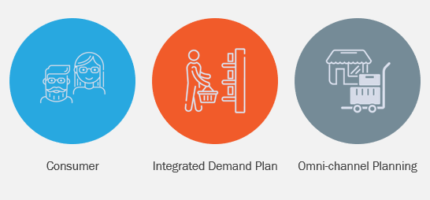
Grouping similar retail customers into “channels” to organize go-to market efforts has been a hallmark of the CPG industry. This organizing construct exists because it has enabled more scalable, efficient and effective routes to reach consumer markets. The channel model was built on the premise that shoppers exhibited similar trip behavior within a retail format, thereby enabling manufacturers to use that medium to capture shopper value. This gave rise to organizations with teams and planning cycles structured around Grocery, Mass, Club, Drug, Dollar and more recently, Ecommerce.
While shoppers still think about outlets to fulfill trips, the availability of offers has blurred and people are shopping across more outlets than ever. Evidence that shoppers think less in terms of outlet is present everywhere you turn. Take, for example, Google Express, an online
platform that aggregates products available to be delivered based on your location. A search for “pea crisps” in our neighborhood returned above-the-fold results from Target, Walmart, Costco, Boxed.com, Fairway and Whole Foods Market – each featuring a product image, price, rating and convenient “Add to Cart” button. With 98% of US adults with internet access going online at least daily, and three-quarters using a smartphone, opportunities abound for shoppers to pick up their device the instant a need arises and receive instant gratification, whether through a nearby store, an online merchant or a third-party delivery service. With the rise of voice-activated search, social shopping solutions and text shopping enablement, this trend will only accelerate. The channel construct no longer reflects how shoppers fulfill CPG needs, creating an unsustainable tension between how shoppers behave and how companies go to market.

Traditional CPG go-to market model elevates channel as an organizing construct
Consider the transformation the media industry has seen in the last half century. Long gone are the days when brand managers could build a media plan by placing percentages of their budget across TV, print and radio mediums. Today, the integrated communications planning process (ICP) starts with a robust understanding and targeting of the end user, telescopes out to map the total consumer journey, and finally identifies where in the fragmented media landscape to invest to reach those end users.
In line with the media transformation, customer channel as an organizing construct must also transform for manufacturers to win with consumers in today’s environment. Rather than start the go-to market
process through established channel management and customer segmentation schemes, manufacturers must reorient their total demand planning to build relationships directly with shoppers who shop anywhere and anytime on their own terms.
Consider this in light of how most manufacturers go to market today. Despite their best efforts to implement omni-channel planning, most organizations are still woefully siloed, filtering staffing, budgeting, planning and marketing activation decisions through the lens of customer segmentation models that are misaligned with where consumers are fulfilling their CPG needs.
What’s a company to do? In short, follow the consumer through the full consumer-shopper journey. This is not to say the future is all about direct to consumer. Rather, the imperative is be consumer first – then determine how to build and segment capabilities to reach target consumers, working effectively with customer partners (or DTC) across the demand landscape. Through our research and experience, we’ve identified three distinct behaviors to help organizations transform.

The best products today are doomed to fail without a strong understanding of the end-to-end consumer journey and ability to insert the right messages at the ideal touchpoints. Consider a successful challenger brand that in addition to identifying a white space in a category, is able to use it’s understanding of the consumer’s journey and the “job to be done” at each inflection point (e.g., finding recipe inspiration, planning a social gathering, stocking the pantry) to build go-to market plans without struggling to force fit its planning into a legacy customer session. The most successful brands are ones that not only uncover powerful consumer insights but also map the end-to-end journey and invest at the right inflection points. This enables go-to-market decisions to be made through the lens of the consumer, rather than a default channel structure.
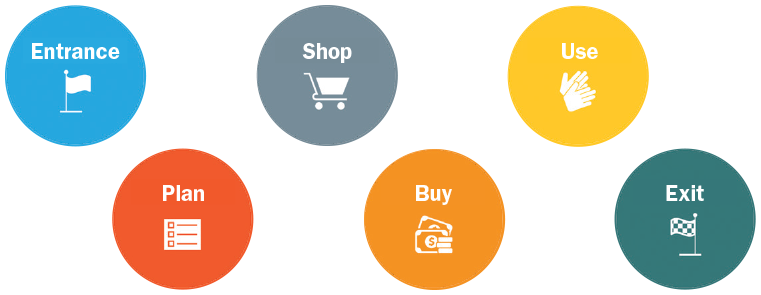
Omnichannel Consumer Journey: Illuminates triggers & barriers across the shopper journey, which is no longer linear

Integrated Communications Planning and traditional “customer planning” must evolve from being compartmentalized and department-driven to a cohesive, coordinated, cross-functional capability. The goal is to apply a common view of the consumer journey that connects all relevant mediums and packages decisions about how to reach, educate and influence purchase into a truly integrated demand plan.
 By being hyper-focused on demand moments and mediums in concert, manufacturers can develop more effective tactics. Proctor & Gamble recently launched a highly compact, concentrated Tide liquid detergent to meet the underserved needs of urban shoppers living in tight spaces. Priced the same as its ubiquitous 96-load jug, the so-called “Eco-Box” is about the size of a shoebox and weighs less than eight pounds. Most notably, the product is sold exclusively through online retailers like Amazon, Walmart.com and Target.com , where its carless city-dwelling shoppers are already turning to stock up on groceries and household goods. This type of innovation is more easily facilitated when go-to-market strategy is dictated not by an antiquated customer segmentation but by a rich understanding of the consumer and her journey.
By being hyper-focused on demand moments and mediums in concert, manufacturers can develop more effective tactics. Proctor & Gamble recently launched a highly compact, concentrated Tide liquid detergent to meet the underserved needs of urban shoppers living in tight spaces. Priced the same as its ubiquitous 96-load jug, the so-called “Eco-Box” is about the size of a shoebox and weighs less than eight pounds. Most notably, the product is sold exclusively through online retailers like Amazon, Walmart.com and Target.com , where its carless city-dwelling shoppers are already turning to stock up on groceries and household goods. This type of innovation is more easily facilitated when go-to-market strategy is dictated not by an antiquated customer segmentation but by a rich understanding of the consumer and her journey.

A large manufacturer recently conducted a study on where, how and why shoppers fulfill CPG needs online. What’s striking about the research is not what it uncovered about barriers to buying perishable items or openness to impulse purchases – valuable content in its own right – but rather the implications for the company’s customer segmentation.
As part of the study, the team looked at how shoppers engage with various fulfillment models (e.g., 2-day shipping, same-day delivery, buy online and pick up in-store). At first the team found a messy and fragmented landscape, with different groups of shoppers making different types of trips across a broad set of online and offline retailers. However, looking at shoppers based on how they fulfill unlocked a whole new way to think about customer as an organizing construct. Through the lens of fulfillment, the team conceived a new shopper segmentation that could be overlaid with customer segmentation. For example, the study found that high-value shoppers frequently used “click & collect” to bridge online and offline behavior. With that insight, the company could prioritize customers offering an omni-channel experience and rethink how it organized resources to service those customers.
The pathway to rethinking customer segmentation can lead to being able to prioritize differently. An example is RXBAR’s first sales call wasn’t to Whole Foods or the nearest health store but rather to the founder’s own CrossFit community – which became the company’s exclusive channel. Only after four years did they open the doors to mainstream channels, starting with Trader Joe’s, based on their understanding of the target consumer’s journey.

New go-to market model starts with the consumer journey for integrated demand planning with customers
While upending the way companies have organized and created go-to-market strategies for decades can feel like a daunting task, fortune favors the bold. Tomorrow’s successful CPG firms will be those that are truly consumer first. As a starting point, here is what we recommend:
To discuss how we can help you rethink your consumer journey, demand planning or customer segmentation, contact us at info@seuratgroup.com.

1 “The Rise of the Empowered Customer.” Forrester, 2017
2 “P&G introduces new concentrated Tide box for e-commerce only.” Cincinnati Enquirer. Nov 2018